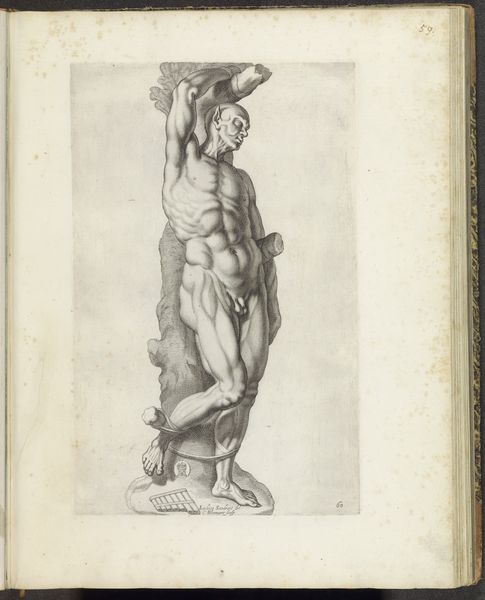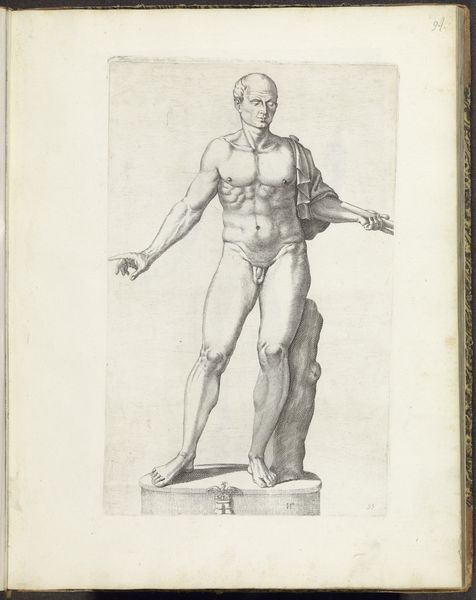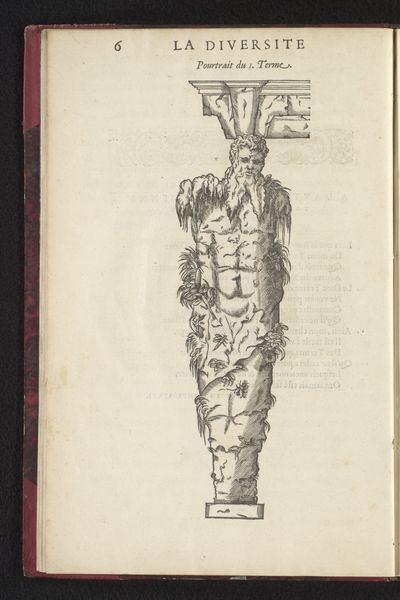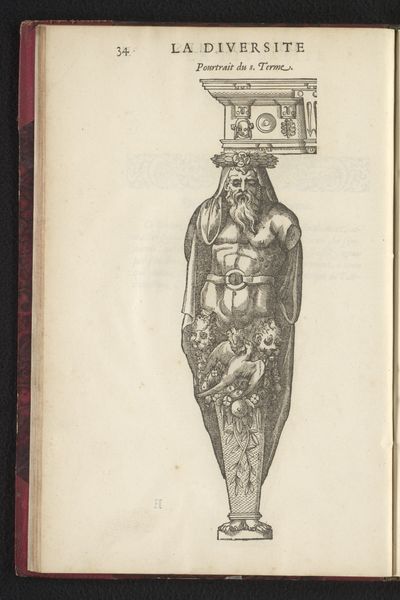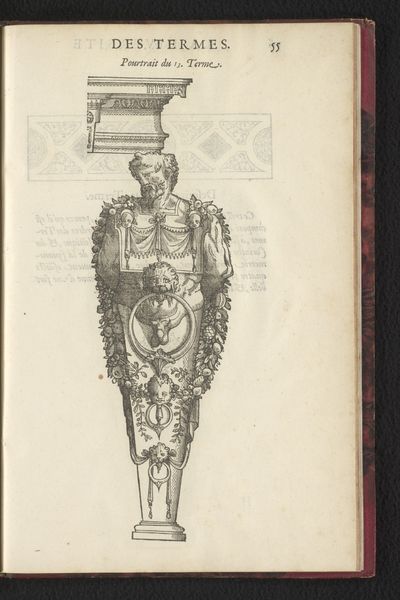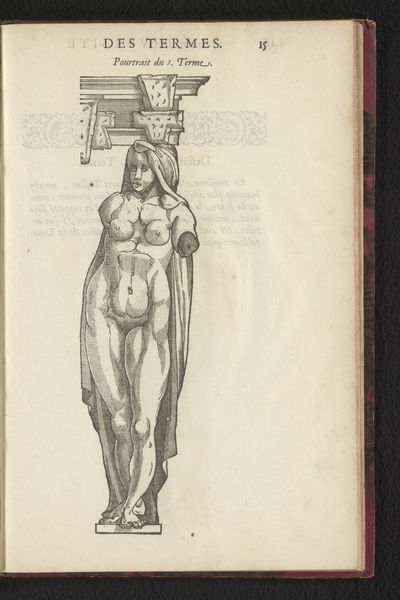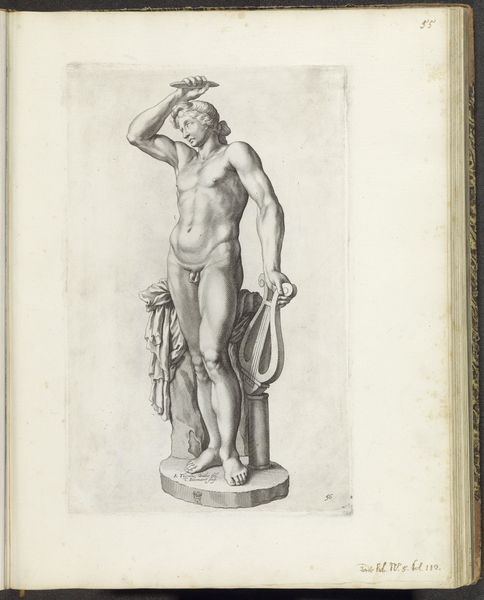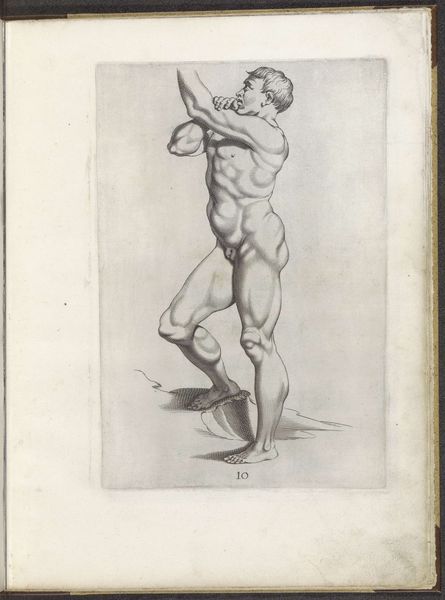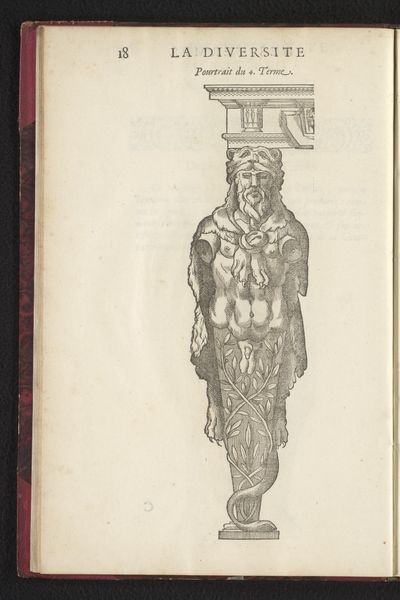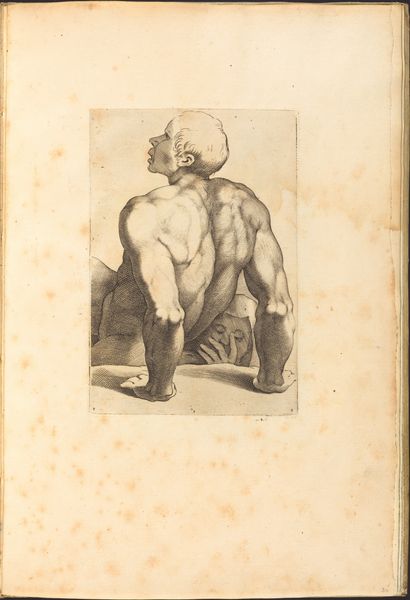
drawing, ink, pen
#
drawing
#
pen drawing
#
mechanical pen drawing
#
pen illustration
#
pen sketch
#
mannerism
#
figuration
#
11_renaissance
#
personal sketchbook
#
ink
#
pen-ink sketch
#
pen work
#
sketchbook drawing
#
pen
#
storyboard and sketchbook work
#
nude
#
sketchbook art
Dimensions: height 308 mm, width 201 mm
Copyright: Rijks Museum: Open Domain
Editor: So, here we have an intriguing pen drawing titled "Mannelijke term met hoofddoek en mantel" – or "Male term with headscarf and cloak," made around 1572 by an anonymous artist. It looks like a page from a sketchbook. The figure's muscular, and there’s something almost unsettling about the headscarf. What do you see in this piece? Curator: It's compelling, isn't it? Considering the historical context, particularly the Mannerist style popular then, this figure becomes even more interesting. Note the hyper-masculine form juxtaposed with what could be considered feminine attire. What does this deliberate contradiction suggest about societal perceptions of gender and power at the time? It challenges the binary, perhaps revealing a fluidity in identity that was simultaneously suppressed and expressed in art. Editor: I see what you mean. The cloak adds to that ambiguity. It's not draped in a traditionally masculine way. Curator: Exactly! The deliberate ambiguity might also subtly critique the established patriarchal norms. Do you see how the ‘term’, essentially a boundary marker, is itself transgressing boundaries through its representation? This suggests a resistance, however subtle, to the rigidity of social structures. How might this image speak to our current conversations around gender and identity? Editor: It makes me think about how even constraints of the past, artists found ways to push against those boundaries. Maybe this image was intended to challenge the status quo? Curator: Precisely. By placing such complex representation within a public, visual forum, it quietly calls attention to these constraints. We learn about the prevailing definitions of not just male gender but also social power from examining the historical placement and public perception of these boundary-defying works. Editor: I never thought of it that way, seeing the historical constraints as also providing opportunity to protest and push beyond. Curator: It adds layers of meaning and depth, doesn't it? Always look beyond what meets the eye at first, and contextualise what you are seeing with history and its place in contemporary society.
Comments
No comments
Be the first to comment and join the conversation on the ultimate creative platform.
